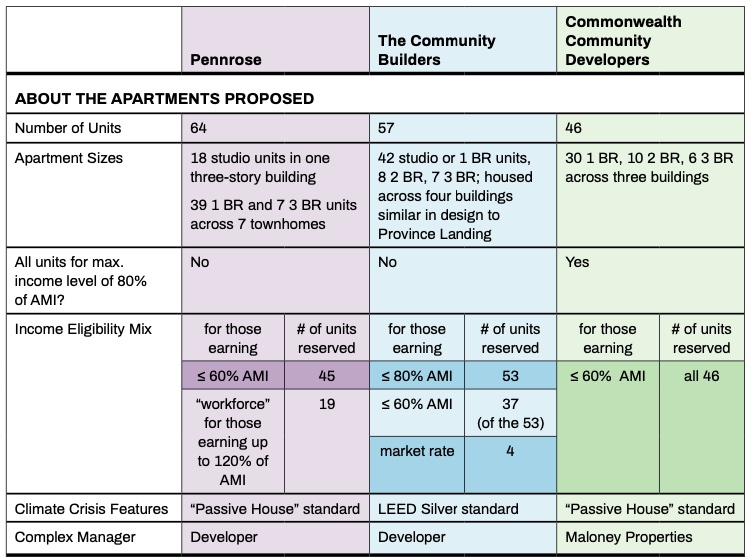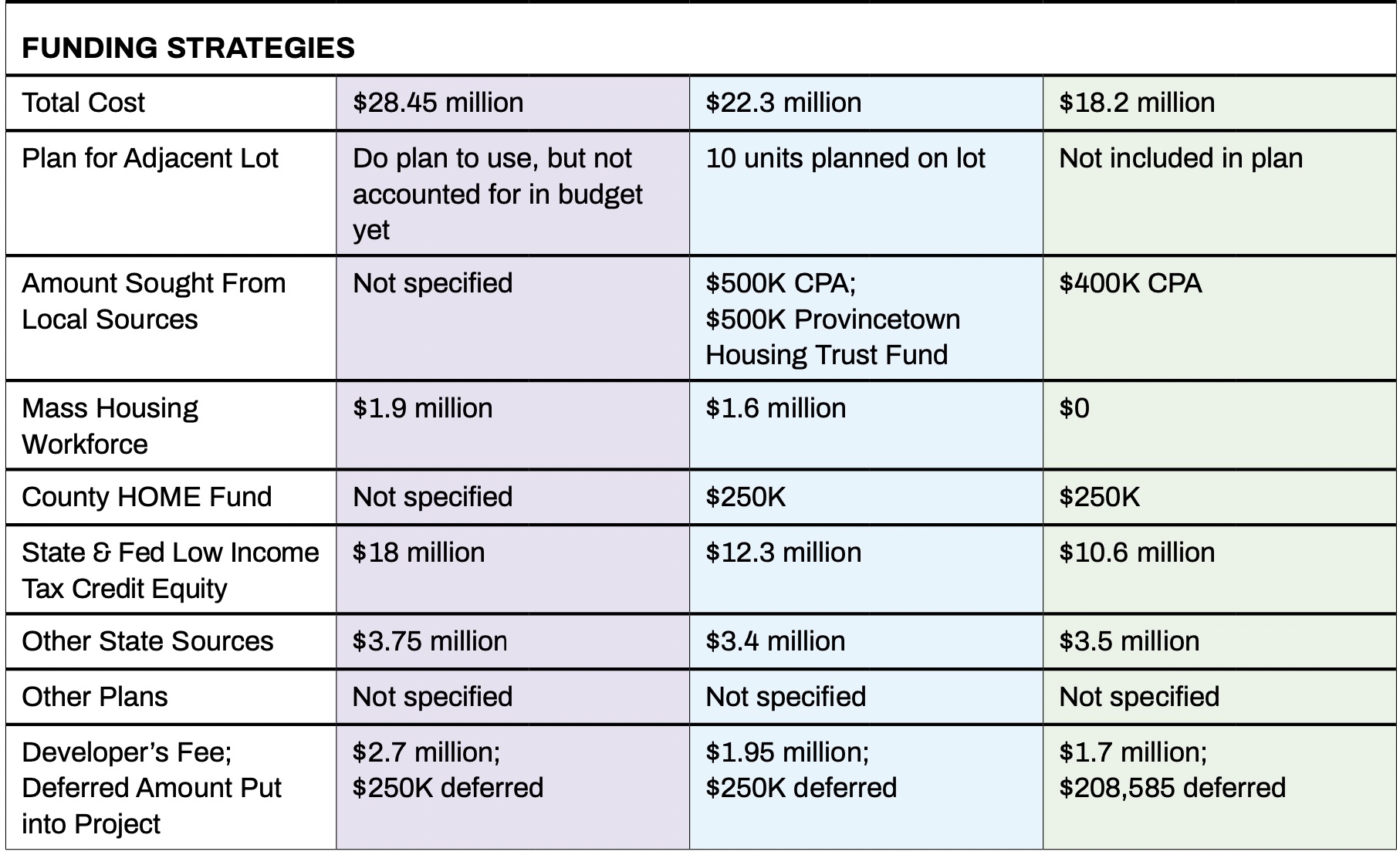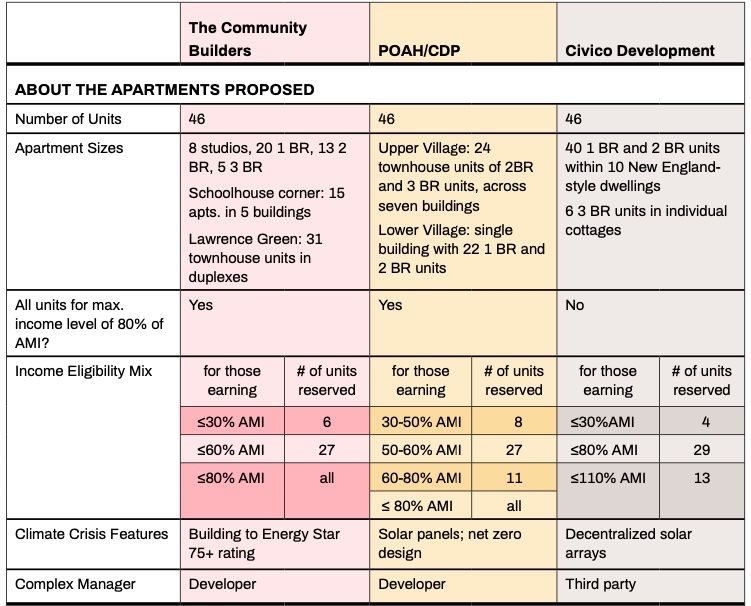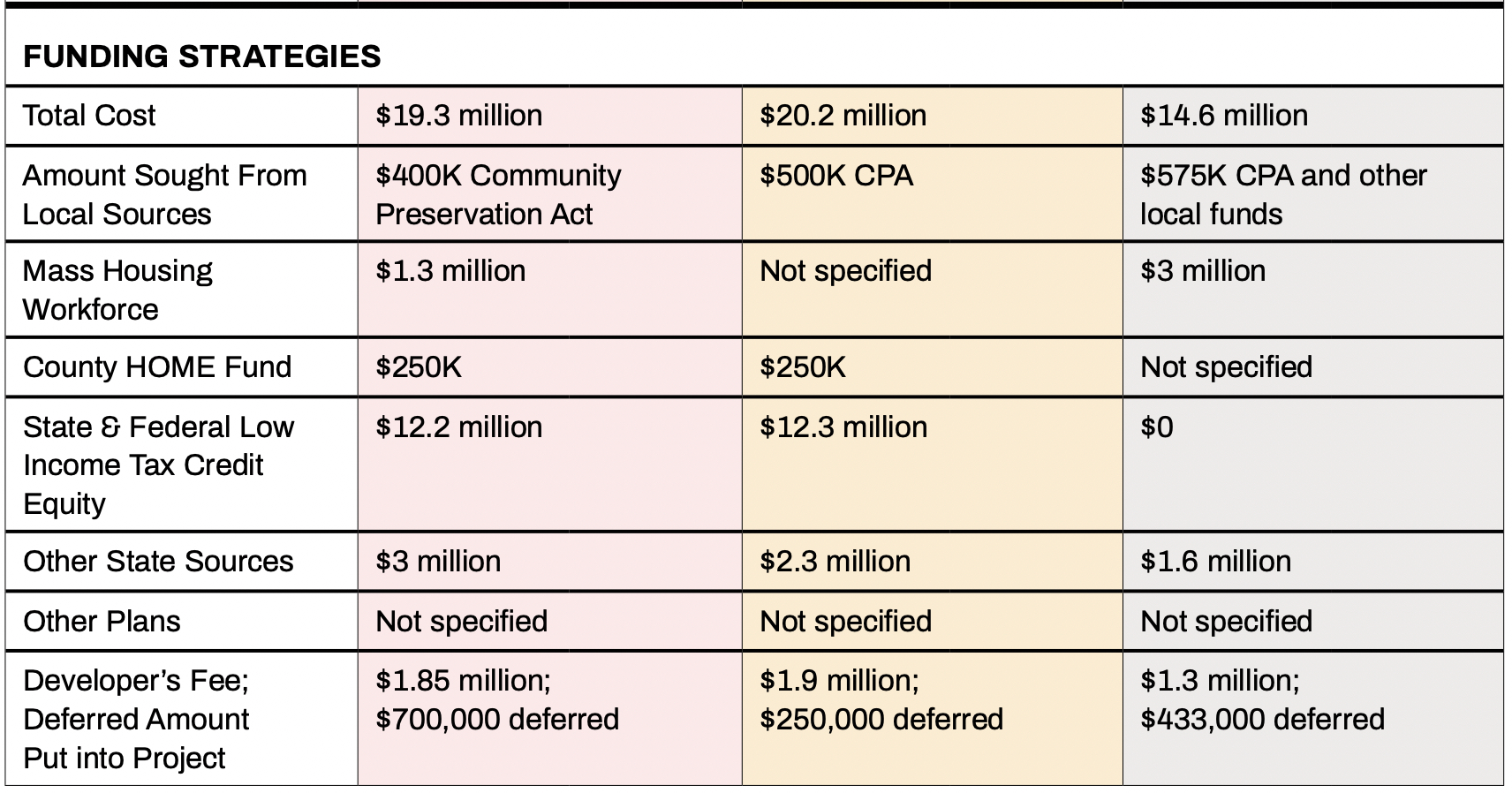When bids to build affordable housing were opened in the last two weeks, describing plans for the former VFW site in Provincetown and for 95 Lawrence Road in Wellfleet, a first look revealed the basics of each potential builder’s vision. The proposals — three for each project — included a range of ideas for how apartments might be designed. The options included cottages and mid-century modern styles, pedestrian-friendliness and community gardens. (See accompanying charts.)
Affordable Housing Bids: Provincetown VFW Site, Jerome Smith Road

Town officials have mapped out their expectations on other fronts, too. One priority is to study each proposal’s description of the range of apartment sizes and mix of income levels of future tenants. The idea is to steer developers to meet the community’s demographic needs. In Provincetown, for use of the former VFW property at 3 Jerome Smith Road, the priorities included housing for low-to-moderate-income tenants, along with some market-rate units.
Provincetown asked developers to plan for half the units to be rented to tenants at or below 80 percent of the Area Median Income. (The AMI is set each year based on census data; limits depend on the number of people in the household, but 80 percent of the AMI currently translates to $54,450 for a single person and $62,200 for a two-person household.)
Provincetown wanted at least 10 percent of the units to have three bedrooms, but the bulk would be studios and one-bedrooms — a goal based on the town’s demographics — according to the request for proposals. And, from the town’s point of view, the more units the better.
Additional features of Provincetown’s RFP were a request for energy efficiency, and an invitation to consider acquisition of an additional half acre lot at 55R Capt. Bertie’s Way. The lot, owned by Paul and Victoria Mendes, is adjacent to the town-owned site and on the market for $1,750,000.
Two bidders, Pennrose and the Community Builders, did propose to include the adjacent lot, but the third, Commonwealth Community Developers, did not. James Perrine, president of Commonwealth, said, “We didn’t want to put it as part of the project because the asking price was high,” adding, “If the cost comes down or some other money shows up, we could easily adapt.”
In Wellfleet, the town set the maximum number of units for the six-acre site at 95 Lawrence Road at 46, and all three proposals specify that number.
One developer, Pennrose, which is bidding on the project in Provincetown, decided not to bid on the Wellfleet project after some initial investigation into the request for proposals, according to Charlie Adams, the company’s regional vice president. Adams said his company asked about expanding the number of units, but since the town is holding firm to the 46-unit maximum, they determined it was “too small a project to make it financially feasible.” Adams added, “It’s difficult to do a project that’s less than 50 units.”
Affordable Housing Bids: Wellfleet, 95 Lawrence Road

In its request for proposals, Wellfleet asked that at least half of the apartments be reserved for tenants making 80 percent or less of the AMI — but noted it would look more favorably on proposals that reserved even more than 80 percent of the units for such tenants.
The town would like to see plans for these apartments to be rented to households whose incomes range from 30 percent of the AMI up to 120 percent. (Housing for people earning at that higher level is often referred to as “workforce housing.”)
None of the proposals plan for units to be offered at the 120-percent threshold, but one developer, Civico, proposed a mix that includes 13 units planned for tenants earning up to 110 percent of AMI. “With developable land in short supply, we feel there will be limited opportunities to further add to the ‘missing middle’ housing inventory,” their proposal stated.
The Civico bid is unique on one other dimension. Project manager Taylor Bearden said that the development will not be financed with low-income housing tax credits, since the proposal is aimed at moderate-income earners, and the pursuit of tax credits can slow a project down.
An added twist in the Wellfleet request for proposals was that the developer would also be responsible for part of the costs for construction and operation of a sewer system for the project. The RFP set the estimated capital cost to the developer for the sewer and treatment system at $764,000.
As towns analyze the bids, another thing they are looking to assess is the soundness of the potential developer’s financing strategy. That is part of what will make the project feasible, along with the developer’s track record, site design, and other considerations.
“What we are looking for is a developer’s knowledge and experience in that very competitive environment,” said Michelle Jarusiewicz, Provincetown’s community housing specialist.
“Developers have six to ten different sources of funds they may apply for, and every year what’s available may evolve,” Jarusiewicz said. So, what’s stated in the proposals may not be exactly the way things go, she explained. “But at the end of the day, the math has to work.”



